Got a slow-flowing Brita filter? Wondering why your Brita filter is taking so long to produce a batch of water? We’ve shared the most common reasons for a slow-flowing Brita filter – and the best solutions to restore a faster flow – in this guide.
📌 Key Takeaways
- There are five types of Brita filters, and all of them are prone to slow flow in certain situations.
- Your Brita filter may be slow due to an air bubble in the filter media, high sediment levels in your water, incorrect installation of the filter, or poor flushing of the filter.
- You can fix a slow flow rate by properly installing and flushing the filter, getting rid of air bubbles, and replacing the filter when needed.
Table of Contents
📖 Types of Brita Filters
There are five types of Brita filters available today.
For Brita’s gravity pitchers and dispensers, there are:
- The Brita Standard filter
- The Brita Elite (Formerly LongLast) filter
- The Brita Stream filter
For faucets, there’s:
- The Brita Faucet filter
For Brita’s water bottles, there’s:
- The Brita Bottle filter

In this guide, we’ll be sharing what we know about all of Brita’s filters collectively. If a certain point only applies to one of the Brita filters, we’ll let you know.
📉 How Fast Should a Brita Filter Work?
The average speed of a Brita water filter depends on the type of filter you buy.
For gravity filtration, Brita Standard filters and Elite filters take 10-15 minutes to filter an entire reservoir of water. Brita’s Stream filter offers near-instant filtration.
The Brita Stream filter is faster than the Brita Elite filter (previously called LongLast) and the Brita Standard filter. You fill the reservoir in exactly the same way, but the Brita Elite filter and Standard filter produce filtered water before pouring, while the Stream filters as you pour.
Brita’s faucet filter has a flow rate of 1.5 gallons per minute (GPM). In the US, the average water flow rate for a kitchen sink faucet is between 1.0 GPM and 2.2 GPM. So, Brita’s faucet filter is pretty good – but the flow will drop to around 1.0 GPM when the filter needs changing.
The Brita Bottle Filter provides instant filtration. The filter is attached to a straw, so water is filtered when you suck the straw.
Related: Understanding the Factors Behind Your Brita Filter’s Rapid Filtration
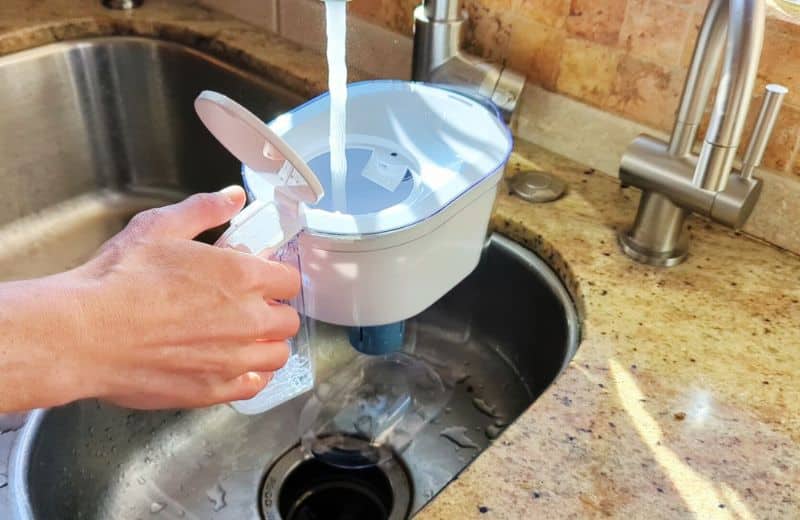
🚱 Why Is My Brita Filter So Slow? 6 Reasons
We’ve shared the 6 most common reasons for a slow flow rate in your Brita filter below.
Air Bubble in the Filter Media
It’s common for new filter cartridges to have trapped air bubbles when you first install them. These air bubbles clog up the surface of the filter media, reducing the flow rate.
📌 To find out whether your Brita filter has an air block, fill a bowl with water and place the filter inside. If the filter floats on the surface of the water, it probably has trapped air.
High Sediment Levels in Your Water
The more sediment your water contains, the faster the filter will clog. If your water is particularly high in sediment, the particles will accumulate on the surface of the Brita filter media at a faster rate, blocking the passages and reducing the available space for water to flow through.
Well water is particularly high in sediment and other contaminants that could block the filter media, like iron and hard minerals. Brita doesn’t recommend using well water in any of its pitchers.
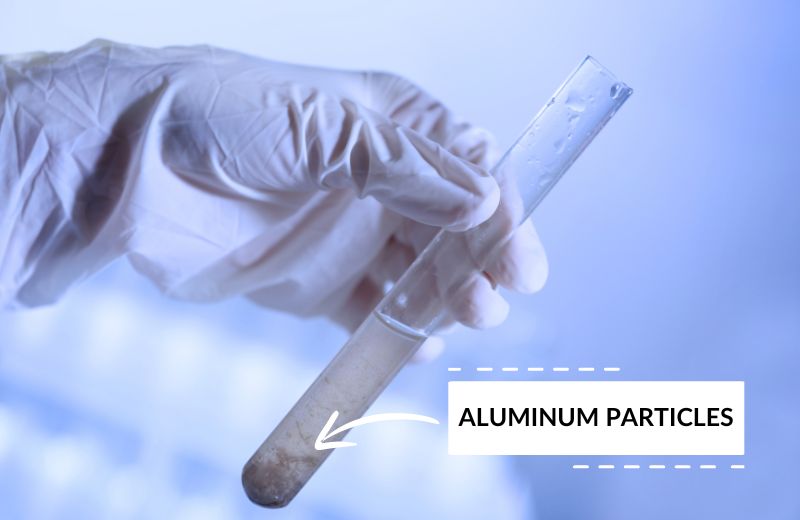
Incorrect Installation or Poor Flushing of the Filter
Installing your Brita water filter could prevent water from properly flowing through the media.
Different Brita filters have different installation processes. While they’re easy to install, it’s easy to fail to click them properly in place – which could affect flow rate.
Not flushing the filter before use could also affect flow rate due to lingering carbon particles inside the media.
Not Replacing the Filter On Time
An obvious cause of slow flow rate is not replacing your Brita water filter on time.
No matter what type of Brita filter you buy, regardless of its lifespan, you’ll need to replace the filter eventually.
The filter media will become so clogged with contaminants that water can’t pass through any faster than drip-by-drip.
If you choose to ignore your filter life indicator or try to extend your filter life beyond recommended, you may hinder the filtration process and increase the risk of bacteria buildup in the filter media.
Low Water Pressure (Brita Faucet Filter Only)
Brita faucet filters only deliver their 1.5 GPM flow rate if your faucet water pressure is good to begin with.
If water flows slowly towards the filter, it’ll end up leaving the faucet at an even slower speed. You should always expect your faucet water filter to slow down flow somewhat, but if your water pressure is good, the water delivery speed should be decent, too.
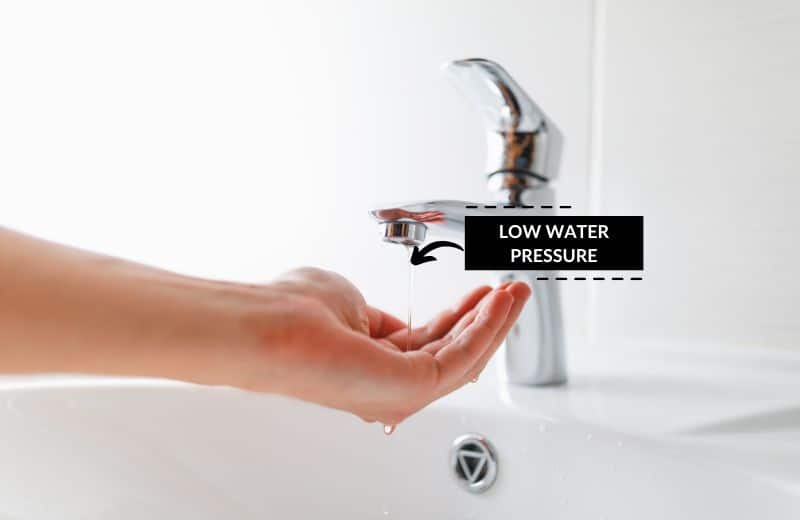
Aeration From The Faucet
Brita’s filters are designed to treat even the most aerated tap water, but that’s not to say that aerated water won’t reduce flow rates somewhat.
If your tap water is aerated, this may affect the speed of water flowing through your Brita water filter.
📝 How to Improve Brita Filter Flow Rate
Here are our top tried-and-tested ways to improve the speed of the filtration process in your Brita filter:
Dislodge The Air Bubble
If poor flow in your Brita water filter is caused by a trapped air bubble, you need to dislodge the air to allow water to filter properly through the media.
📌 To dislodge an air bubble, soak the filter for 20 minutes in cold tap water. Then, rinse and reinstall the filter.
If a 20-second rinse doesn’t dislodge the air, gently tap the filter on a solid surface while keeping the filter submerged under the water.
Install a Pre-Filter
Brita water filter cartridges aren’t designed to address sediment issues – in fact, sediment will clog the media.
If your city water is sediment heavy or leaves hard water deposits, install a sediment filter or a water softener to treat the water that comes out of your faucet.
Correctly Flush and Install the Filter
To avoid issues caused by incorrectly flushed and installed filters, you’ll need to – you guessed it – make sure to correctly flush and install your filter.
Read the user manual carefully for information on installing the filter. Pitcher filters need to be snapped and clicked in place, while faucet filters slot inside the filter housing. Make sure the gasket or o-ring is properly seated in the filter housing.
To flush the filter correctly, just run cold water through your faucet for five minutes (for faucet filters) or flush the filter with cold water for 15 seconds (for pitcher filters). You no longer need to soak Brita pitcher filters for 20 minutes before use.
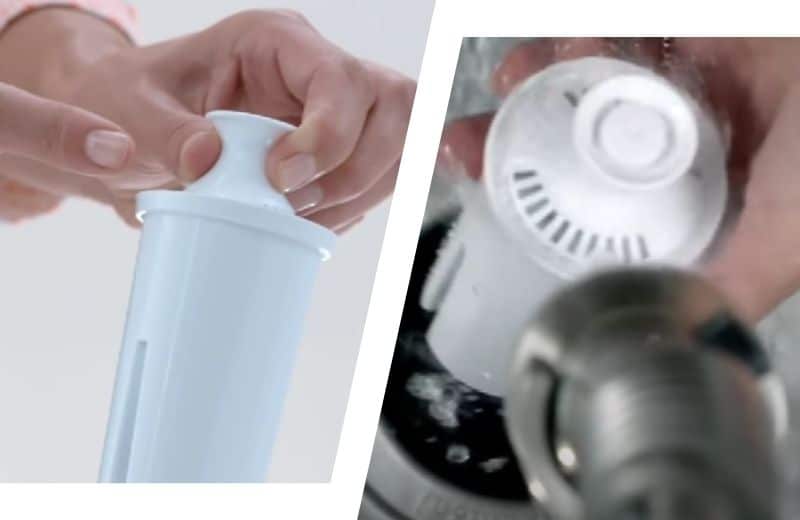
Address Water Pressure Issues (Brita Faucet Filter Only)
If your tap water pressure is poor, consider installing a pressure booster pump.
Your under-sink water pressure should be fast enough to send water at a steady rate through the filter.
Buy a New Filter
In some cases, there might be nothing you can do about your Brita filter’s slow flow rate, and the only solution will be to replace the filter.
Brita’s filter lifespan estimates are based on a predetermined “average” water use and water quality. If your water is more contaminant-heavy than average, or you use more water than Brita’s “average” estimate, you might need to replace your filters more frequently due to faster clogging. Unfortunately, there’s not much you can do about that if you want to maintain high-quality filtered water.
The lifespans for Brita water filter products are as follows:
| Model/Unit | Capacity | Lifespan |
|---|---|---|
| Standard filters | 40 gallons | 2 months |
| Elite filters (previously Brita LongLast filter) | 120 gallons | 6 months |
| Stream filter cartridges | 40 gallons | 2 months |
| Bottle filters | 40 gallons | 2 months |
| Faucet filters | 100 gallons | 4 months |
📌 If you keep forgetting to buy new filters for your Brita pitcher, buy a pitcher with a filter replacement indicator, or a filter change indicator. This will display a red light when the filter needs changing, so you never have to check your calendar.
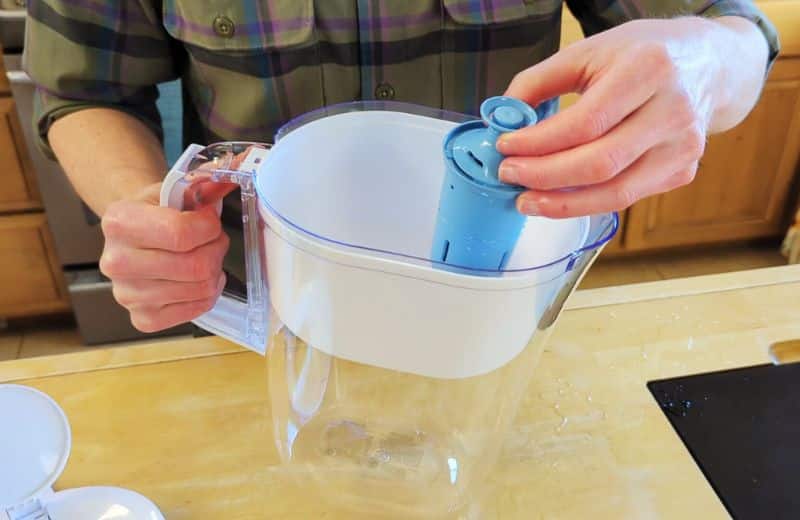
Buy a Brita Stream (For Brita Pitchers)
You might simply be unhappy with the speed of water flowing through your Brita pitcher, no matter how new the filter is.
In this case, we recommend buying the Brita Stream pitcher and the corresponding Stream filter for this pitcher.
📌 The Brita Stream filters water as your pour, rather than as you fill. It’s designed to be fast – about 10 times faster than the market leader, whoever the folks at Brita think that is – so it’s the best solution for people who are too impatient to wait for standard gravity filtration.
The Brita Stream filter has the same 2-month lifespan as the Standard filter and removes the same contaminants. The only difference is the speed.
Keep in mind that the Stream might not filter water quite as effectively as the Standard filter since the contact time between water and the filter media is shorter.
❔ Why Is My Brita Filter So Slow? FAQ
Can you wash Brita filters to extend their lifespan?
No, you can’t wash Brita’s filters to extend their lifespan. Some filters, like ceramic filters, can be washed out – you can send the water through the filter in the opposite direction to remove contaminants lodged in the media. You can’t do this with a Brita filter. Activated carbon media and ion exchange resin aren’t designed to be washed out, and doing so may irreversibly damage the filter.
How do you unclog a Brita filter?
If your Brita filter flow rate is slow due to an air bubble, you can unclog the filter by gently knocking it on a hard surface to get rid of the trapped air. Otherwise, you can’t unclog a water filter that has become saturated with contaminants. That’s your sign that you need to replace the filter.
Why is my new Brita filter not working?
Your new Brita filter might not be working if you’ve primed or installed the filter incorrectly. Make sure the filter is properly in place and you’ve flushed it to remove excess carbon dust.
How do you know if your Brita filter is working?
You know your Brita filter is working if the flow rate is steady (at least a fast drip in a Brita Pitcher or a pour from the Brita Faucet Filter), your water tastes and smells chemical-free, and your filter replacement indicator light indicates that the filter doesn’t need to be replaced yet. Compare the taste, smell, and appearance of your normal tap water and water from your Brita filter. Your Brita filtered water should be clear, not cloudy, and shouldn’t taste of chlorine.

can you fill the top reservoir twice to have more water, so that the water in the pitcher comes up over the filterl
Yes, just be careful not to overfill it or it might be hard to pour if there is still unfiltered water in the top reservoir